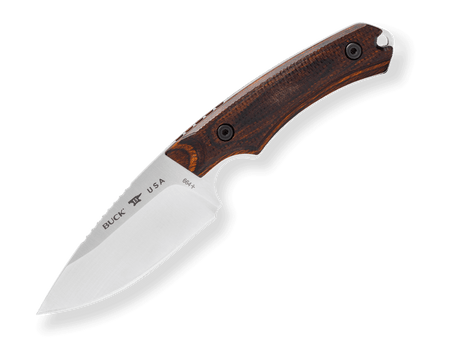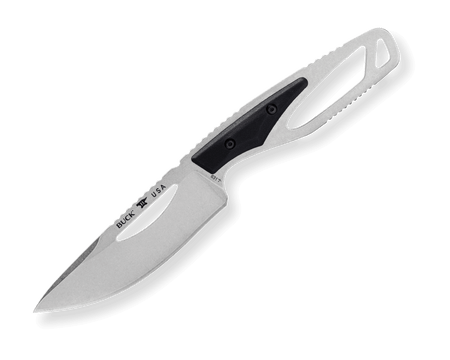Please don't throw, pound, pry or chop with a Buck knife. It's not safe and if you damage the knife using it that way, it may void the warranty. Strong impact or twisting can also damage your knife, or worse, cause an injury. If you have a locking blade, always check that the locking mechanism has secured the blade open before you use it.
KNIFE CARE INSTRUCTIONS
Buck knives are built to last. Cleaning and caring for your knife will maintain performance and enhance the life of your knife
Keep your knife dry; that means the entire knife, not just the blade.
Keep your knife clean, particularly moving parts and locking devices.
Keep your knife oiled; especially pivot points and the blade. Oil at least twice a year.
Keep your knife sharp; a sharp blade is safer than a dull one.
Don't try to repair a damaged knife yourself. Send it to us and we'll do our best to make it good as new.
Store your knife in a dry place.
CLEAN THE ENTIRE KNIFE REGULARLY
That includes the blade, pivot points, and locking mechanism. It's best to avoid immersing the knife in liquid. But if you do, be sure to dry your knife thoroughly. Spray cleaners are a good alternative.
Clean and oil your knife regularly to avoid sticky residues, light surface oxidation, and the beginnings of rust. Always lubricate your knife after cleaning; we recommend using Wax Lubricant. It will lubricate, seal and protect your knife from surface oxidation and corrosion from moisture.
RECOMMENDED CLEANERS
We recommend using a residue-free, mild cleaner on your knife and re-oiling it regularly.
A non-abrasive metal polish can be used to remove surface oxidation, rust, or tarnish. Sticky residue on your blades and other steel parts can be removed with mild cleaning agents.
For cleaning handles, mild cleaning agents are recommended.
Don't use harsh detergents that contain chlorine, like washing machine powders. They can speed up the corrosion of the metal.
DISCOLORATION IS A SIGN OF OXIDATION
If you find the metal has a blue, gray, or black color, it is a sign of oxidation and a precursor of rust.
Stainless steel, which is what Buck uses, does not discolor easily. If you do notice a change in the color of the metal, clean it immediately. It's a sign of rust waiting to happen.
Discoloration is common in non-stainless steel. But regular cleaning will keep the metal from rusting.
GET RID OF RUST
Rust is reddish-brown in color and will eat pits into your blade and contaminate what you cut. Light rust can be cleaned and removed with oil. Heavier rust requires more abrasive action.
A non-abrasive metal polish can be used to remove rust.







